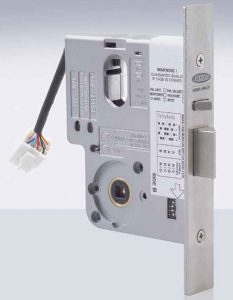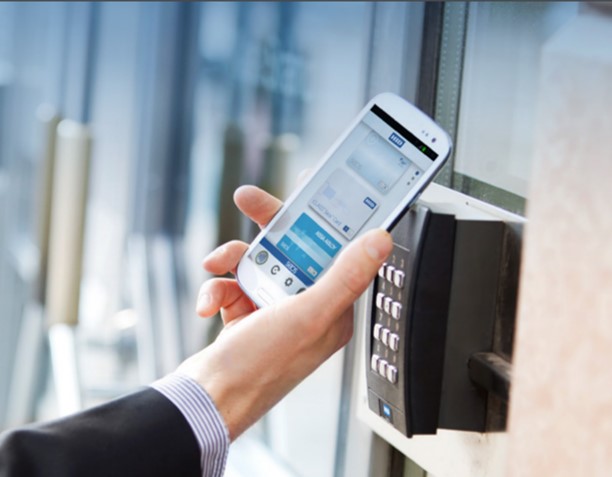The Locksmith Series – Part 5
How do you make it easy for the right people to get into your premises or buildings, and keep the wrong people out? What should you expect from a good locksmith? Lets have a look.
According to ARC, security and automation experts in Hamilton, NZ, access control systems are specifically designed to permit the free flow of authorized personnel into any site or area within a site whilst denying entry to unauthorized personnel (staff and visitors).
Therefore, access control allows effective management of who goes where and when.
A good locksmith will take great care designing each new system to clearly understand your needs and so ensure the access control solution meets your expectations.
Chubb NZ state that there are a wide range of control measures available, whether you need a single entry point or a multi-site and large campus application. This includes Smart Readers, Biometrics, or simply ID cards.
Used together with alarm monitoring systems you can rest assured that your property is well looked after and secure.
When ARC install access control solutions for residential and commercial premises, they usually include proximity keyfobs/cards and readers, PIN code keypads, hand-held remotes, a variety of electronic door locks and automatic door closers, door reed switches, Request to Exit switches, the electronic control equipment and the management software.
BOSCH Security in Australia suggest that investing in the right technology is central to the protection of your employees, site visitors and ultimately the success of your company.
While you naturally want your business premises to be as open and welcoming as possible – as well as making it easy for staff and visitors to move around the building – you need to ensure maximum protection against unauthorized intruders.
By installing building Access Control systems on your commercial property you will significantly reduce your business’ exposure to criminal activity, such as thieves and trespassers, and greatly improve the security of staff, visitors and assets on the premises.
How does it work and what do you need?
Lets break it down:
Proximity Readers with Fobs or Cards

Proximity readers are the most commonly used method of controlling access to and from buildings and areas within buildings.
Proximity readers operate by analysing the unique electronic information stored on a proximity keyfob or swipe card presented to it, and then transmits this information to the control equipment which compares it with information stored in the access system.
If the information matches an authorised user, the control equipment will then signal the associated electronic door lock to “unlock” allowing the user access.
Proximity keyfobs/ swipe cards are normally uniquely programmed for each authorised user. Permissions are granted for each user in line with the client’s security protocols. Such permissions can be set to control access by area, time and date.
The access control equipment records on an electronic log each time a keyfob/ swipe card is presented to a proximity reader that is part of the access system. This information is accessible to the client using the management software. Useful management reports can be generated to find out who entered and exited areas/buildings, and at what time and date.
Proximity readers can be used as standalone system or part of an integrated building management system. Prox cards/ swipe cards have the added benefit over keyfobs of being able to print photos and other user information on them, enabling the cards to become ID cards as well as a device to legitimately access the client’s building and areas within their building.
Mobile access control

Near Field Communication (NFC) and Bluetooth™ wireless technology on mobile phones means it is now possible to use a smartphone just like an access card. This technology is great for situations where you need to set up access remotely for multiple site visits, as there is no need for separate access cards.
Electric Locking Systems

An integral part of most access control systems are the electric locks used to secure and manage the gate and door access points.
It is normal to have these locks monitored via the access control system to ensure any forced entry through such gates or doors is detected immediately and the alarm activated to alert security personnel.
Your locksmith will be able to provide you with a wide range of durable high-quality electric gate and door locks to suit most situations and include:
- Electric roller door locks
- Electric mortise locks
- Electromagnetic locks
- Electric gate locks
- Electric door strikes
- Motorised drop bolts
- Electric Cobolt
- Motorised V-Lock
Access control and management systems usually need to be custom designed for each installation. Whether you are extending your existing system or wanting to install a new system, we are here to help you from the design stage, through installation to commissioning and handover.
Biometric Technologies
Perhaps the most secure level of access control is the range of biometric technologies available to suit different applications.
Fingerprint Readers

Fingerprint recognition is the process of comparing the fingerprint that is being used on a door-entry scanner, with the previously saved fingerprint for that person. Because no two fingerprints are the same, it is a very common and very secure means of access control.
Fingerprint identification is based primarily on the minutiae, or the location and direction of the ridge endings and bifurcations (splits) along a ridge path of a finger.
Fingerprint terminals are compact, relatively economical to install and can be used indoors or outdoors to offer a high level of security. Your locksmith can integrate a fingerprint reader with the site’s access control system to provide customers with a seamless enrolment and verification experience.
Iris Scanners

Iris Recognition is a biometric method of identifying people based on unique patterns within the ring-shaped region surrounding the pupil of the eye. Every iris is unique to an individual, making it an ideal form of biometric verification.
The process of Iris Recognition involves the use of a specialised digital camera. The camera will use both visible and near-infrared light to take a clear, high contrast picture of a person’s iris.
Iris Recognition is compatible with contact lenses and even eyeglasses and can be used by blind people, as long as they have an iris. This makes it an extremely versatile technology when it comes to securely identification.
Facial Readers

Face recognition is a method of identifying or verifying the identity of an individual using their face. Face recognition systems can be used to identify people in photos, video, or in real-time.
Face recognition systems use computer algorithms to pick out specific, distinctive details about a person’s face. These details, such as distance between the eyes or shape of the chin, are then converted into a mathematical representation and compared to data on other faces collected in a face recognition database.
Facial readers provide unobtrusive, hands-free contactless access control with high throughput and convenience, all while maintaining a very high level of security.
CCTV Systems
Businesses of all sizes can benefit from electronic access control systems, as it protects staff, precious assets and important information. These systems are frequently used together with Closed-Circuit Televisions systems (CCTV).
Closed-circuit television (CCTV), also known as video surveillance,[1][2] is the use of video cameras to transmit a signal to a specific place, on a limited set of monitors.
Our next article win this series will look at CCTV and how it helps to keep you property secure.
